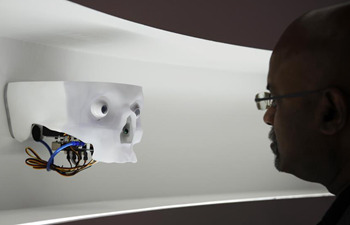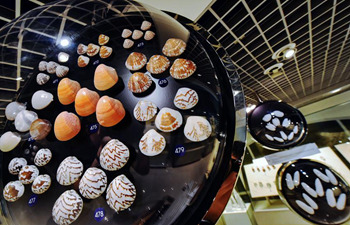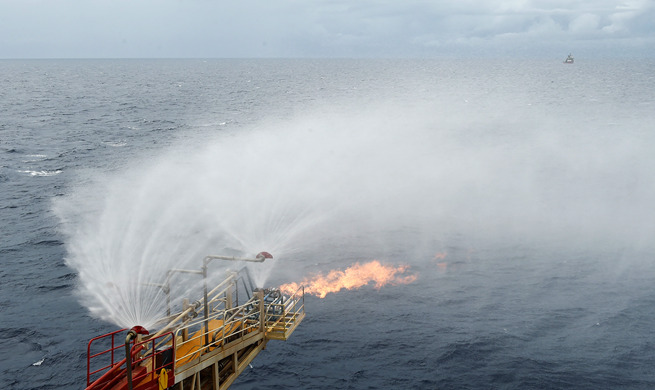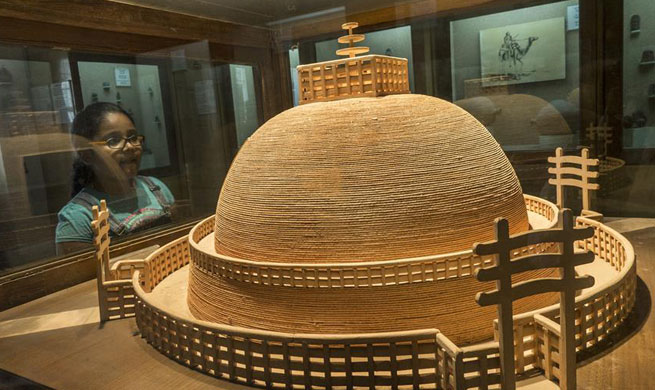SAN FRANCISCO, May 18 (Xinhua) -- A new study published Thursday in Nature Communications indicates that nanoscale stretching or compressing can significantly boost the performance of ceria, a material widely used in catalytic converters and clean-energy technologies.
"Ceria stores and releases oxygen as needed, like a sponge," said Will Chueh, an assistant professor of materials science and engineering at Stanford University and a faculty scientist at SLAC National Accelerator Laboratory.
"We discovered that stretching and compressing ceria by a few percent dramatically increases its oxygen storage capacity," said the co-author on the paper. "This finding overturns conventional wisdom about oxide materials and could lead to better catalysts."
Known as cerium oxide, ceria is a spongy material used in catalytic converters to help remove air pollutants from vehicle exhaust systems and in various green-energy applications, such as fuel cells and solar water splitters.
"The oxygen storage capacity of ceria is critical to its effectiveness as a catalyst," said study co-author Aleksandra Vojvodic, a former staff scientist at SLAC now at the University of Pennsylvania, who led the computational aspect of this work.
"The theoretical expectation based on previous studies is that stretching ceria would increase its capacity to store oxygen, while compressing would lower its storage capacity."
To test this prediction, the research team grew ultrathin films of ceria, each just a few nanometers thick, on top of substrates made of different materials. This process subjected the ceria to stress equal to 10,000 times the Earth's atmosphere, causing the molecules of ceria to separate and squeeze together a distance of less than one nanometer.
Typically, materials like ceria relieve stress by forming defects in the film.
However, "using high-resolution transmission electron microscopy to resolve the position of individual atoms, we showed that the films remain stretched or compressed without forming such defects, allowing the stress to remain in full force," said Robert Sinclair, a professor of materials science and engineering at Stanford.
To measure the impact of stress under real-world operating conditions, the researchers analyzed the ceria samples using the brilliant beams of X-ray light produced at Lawrence Berkeley National Laboratory's Advanced Light Source.
"We discovered that the strained films exhibited a fourfold increase in the oxygen storage capacity of ceria," study lead author Chirranjeevi Balaji Gopal was quoted as saying in a news release from Stanford. "It doesn't matter if you stretch it or compress it. You get a remarkably similar increase."
The high-stress technique is readily achievable through nanoengineering, added Chueh. "This discovery has significant implications on how to nanoengineer oxide materials to improve catalytic efficiency for energy conversion and storage," he said.
"It's important for developing solid oxide fuel cells and other green-energy technologies, including new ways to make clean fuels from carbon dioxide or water."

















